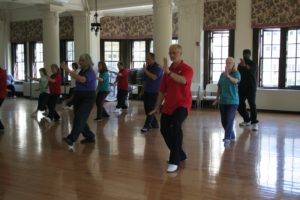Reduce Genetic Markers of Inflammation with Yoga
By John M. de Castro, Ph.D.
“Yoga is fantastic for decreasing stress levels, and research has also shown that those who practice yoga regularly have higher levels of leptin and adiponectin in their bodies. Both of these natural chemicals work to alleviate inflammation in the body.” – Julie Montagu
The immune system is designed to protect the body from threats like stress, infection, injury, and toxic chemicals. One of its tools is the Inflammatory response. This response works quite well for short-term infections and injuries. But when inflammation is protracted and becomes chronic, it can itself become a threat to health. It can produce autoimmune diseases such as colitis, Chron’s disease, arthritis, heart disease, increased cancer risk, lung disease, sleep disruption, gum disease, decreased bone health, psoriasis, and depression. Needless to say, chronic inflammation can create major health problems. Indeed, the presence of chronic inflammation is associated with reduced longevity. So, it is important for health to control the inflammatory response, allowing it to do its job in fighting off infection but reducing its activity when no real external threat is apparent.
Of course, it is far better to prevent chronic inflammation in the first place than to treat it later. Mind-body techniques such as yoga, Tai Chi and meditation have been shown to adaptively reduce the inflammatory response. In today’s Research News article “Preliminary indications of the effect of a brief yoga intervention on markers of inflammation and DNA methylation in chronically stressed women.” (See summary below or view the full text of the study at: https://www.ncbi.nlm.nih.gov/pmc/articles/PMC5290356/ ), Harkess and colleagues recruited women who were psychologically distressed and randomly assigned them to either a wait-list or to receive 8 weeks of twice a week for 1-hour yoga practice. Blood samples were obtained from the participants and measures of psychological distress, perceived stress, and positive and negative emotions, before and after the practice and 1 month later. Blood was assayed for concentrations of cytokines (IL-6, TNF), DNA methylation for immune candidates IL-6, CRP, and TNF.
They found that there were trends for improvements in all of the inflammation markers, but most were not significant. But, there was a significant improvement in the marker of DNA methylation in the region of Tumor Necrosis Factor, TNF. DNA methylation have been associated with poor physical health, and high levels of inflammation. So, the reduction in DNA methylation in the TNF region suggests a reduction in chronic inflammation. This may suggest that yoga practice might improve general health by reducing chronic inflammation.
It is reasonable to conclude that although there were many suggestive results, this pilot trial did not have sufficient statistical power to detect significant differences for most markers. Also, more extensive yoga practice beyond the 16 sessions in this trial, might produce more robust effects. In addition, the pilot trial lacked an active control condition. So, a number of sources of bias could be responsible for the results. The results, however, are sufficiently interesting and suggestive that they support conducting a larger randomized controlled clinical trial with an active control, perhaps aerobic exercise on the effectiveness of yoga practice on genetic markers of inflammation.
“There’s evidence that such “mind-body practices” dampen the activity of genes associated with inflammation – essentially reversing molecular damage caused by stress.” – Jo Marchant
CMCS – Center for Mindfulness and Contemplative Studies
This and other Contemplative Studies posts are also available on Google+ https://plus.google.com/106784388191201299496/posts and on Twitter @MindfulResearch
Study Summary
Harkess, K. N., Ryan, J., Delfabbro, P. H., & Cohen-Woods, S. (2016). Preliminary indications of the effect of a brief yoga intervention on markers of inflammation and DNA methylation in chronically stressed women. Translational Psychiatry, 6(11), e965–. http://doi.org/10.1038/tp.2016.234
Abstract
Yoga is associated with reduced stress and increased well-being, although the molecular basis for these benefits is not clear. Mounting evidence implicates the immune response, with current studies focused on protein immune markers (such as cytokines) in clinical populations. To explore the molecular impact, this pilot study uses a subsample (n=28) from a randomised waitlist control trial investigating the impact of an 8-week yoga intervention in a community population of women reporting psychological distress (N=116). We measured interleukin-6 (IL-6), tumour necrosis factor (TNF) and C-reactive protein (CRP) protein levels, and the DNA methylation of these genes and the global indicator, LINE-1. Correlations between these and psychological variables were explored, identifying moderate correlations with CRP protein levels, and methylation of IL-6, CRP and LINE-1. Many cytokine samples were below detection, however a Mann–Whitney U demonstrated a trend of moderate between-group effect for elevated IL-6 in the yoga group. Methylation analyses applied cross-sectional and non-controlled longitudinal analyses. Waist-to-height ratio and age were covaried. We demonstrated reduced methylation of the TNF region in the yoga group relative to the waitlist control group. No other genes demonstrated a significant difference. Longitudinal analysis further supported these results. This study is one of the first to explore yoga and immunological markers in a non-clinical population, and is the first study to explore DNA methylation. These findings indicate that further research into molecular impact of yoga on markers of immune function is warranted, with larger studies required.






